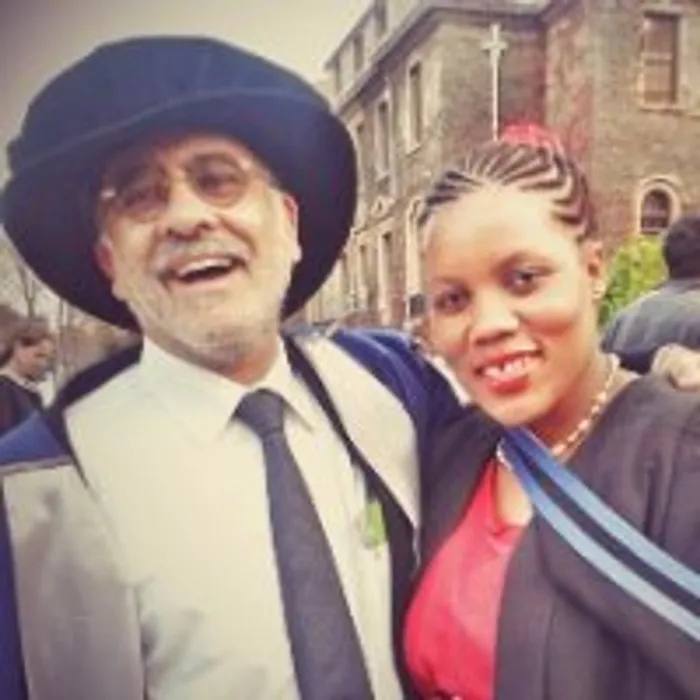Challenge of grappling with, and growing from, an apartheid past

When I began schooling in 1990, I experienced the most unpleasant feeling that emerged from witnessing - for the first time - the crudeness of a black life I did not know existed.
I was a naive girl from the Karoo farms who lived her childhood through intsomi (fable) and carefree imagination.
The splendour of the natural environment supplemented my imagination and made life seem full of possibility.
I marvelled at the bonds that created warmth in my family. Farm life was a protected and safe space.
I had no worries.
I could be a child and play, come home and eat when I was hungry, and collected water and firewood when asked to.
It was a simple yet fulfilling life, even though my family lived on farm-labour earnings.
With all the beautiful experiences my family created for us, little did I know how big the world was.
What hit me when I began schooling was beyond my childhood imagination.
My farm-labouring grandfather had passed away and my grandmother had to move to town in order for us to begin school. At the age of eight I started school late.
Towards the end of the 1980s, Steynsburg in the Eastern Cape was a centre of political violence.
My elder siblings had been taken out of school because of the riots and boycotts that led to police raids on schools and communities.
It was thus fruitless for us to begin school during this period. Instead we were kept at the farm until 1990.
My primary school, now known as Daluvuyo Primary, had faeces-flooded toilet floors that we’d tiptoe around to get to the unhygienic toilet seats.
Parts of the school were prefabricated buildings, including the toilets. The rooms were separated with a thin prefab wall. You could hear conversations from either side of the toilet.
To avoid going to the toilet, we would minimise our food and water intake.
Not that communities had lavish toilets either. The Old Location and New Brighton had public
bucket-system toilets.
People either lined up to use the toilets, went up the mountains or walked to the river. When collected, the buckets were emptied into sewerage dams close to an informal settlement of farm labour migrants.
The smell that covered Steynsburg when it was hot and windy made it difficult for people to enjoy meal times. This was our daily nightmare until the bucket system ended with the building of RDP houses.
Back in Daluvuyo Primary, the stench that came out of the toilets when we played during lunch breaks was unforgiving.
The problem was exacerbated by the fact that two schools used the premises. The other school was Mpumelelo Primary.
We had no cleaners. We, the pupils, were the cleaners and gardeners.
Our teachers drafted after-school cleaning and lunchtime gardening schedules for us. But within days the toilets would be back to the same unhygienic state.
This was the time of Nelson Mandela and Chris Hani. On February 11, 1990, Mandela was released two weeks after I began school. I was 10 years old when Chris Hani was assassinated. This period generated an energy that led to pronounced police violence in Steynsburg.
Community members who disobeyed boycott orders were forced to eat washing powder and other detergents they bought from white-owned shops in Steynsburg.
Police confrontations with political activists were frequent as schools and communities were raided. My uncles and other young men were chased from school to farms to become “farm boys”.
A brother who lived through the 1980s told me that some black men left Steynsburg for exile, but they never heard from them again. He does not know if they were captured and killed by police squads during the years. Poqo members hid in mountains and became known as abanqolobi.
I was on the farm during this time and remember when the farmer warned my grandfathers about armed and dangerous black men who escaped from prisons.
They were reportedly seen roaming around surrounding mountains and farms. It was only later that I learnt these were Poqo members who were fighting the regime.
As I progressed in school, I learnt that life was not as rosy as I imagined it. When it finally dawned on me, I did not know what hit me.
For years I would live with an unquenchable desire to understand why black people were subjected to such conditions. It took my admission to university to find the missing pieces to the puzzle.
One of the many I found was psychiatrist Dr Frances Cress Welsing’s psychoanalysis of racism in The Isis Papers. She explains that black people need to understand that racism is a system.
As a system, it is designed and structured to function in all areas of human life in the interest of maintaining white supremacy.
In her words: “The system is designed for the purpose of maintaining the survival of people who classify themselves as white, as a global minority, over non-white people who are the majority of the world.”
She says the system is a necessity because, without it, the future genetic existence of people classified as white is threatened.
This happens through all areas of human activities, from colonialism to modern-day imperialism.
With her analysis, Welsing debunked Western sciences and argued that they are meant to confuse black people from understanding the system and its purpose.
Welsing explains that black people’s conditions will improve only with concrete actions towards self-determination. As black people, she says, we need to reprogramme our minds to change the beliefs and behaviours that reproduce the confusion and helplessness to experience a different reality.
This is how my mind was reprogrammed since I began schooling
in 1990.
* Jan is a researcher and master’s candidate at the Department of Social Anthropology, University of Cape Town.